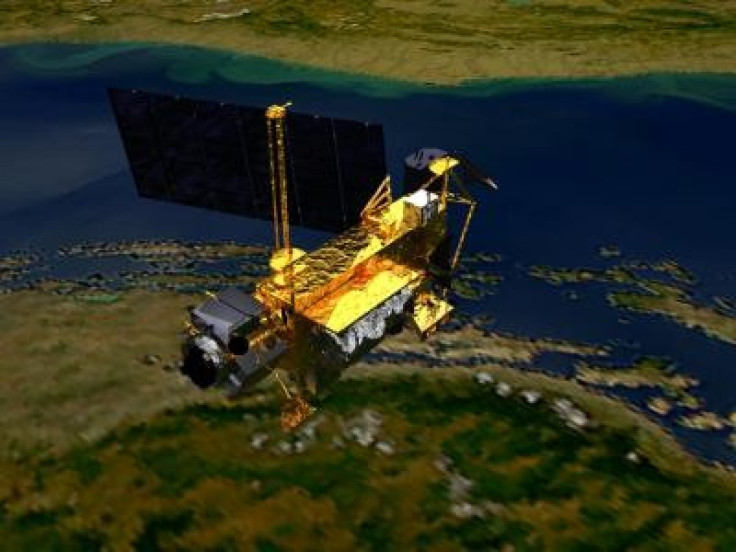NASA: UARS Satellite Debris May Never Be Found

NASA said UARS satellite debris that came crashing to Earth today appears to have dropped into the Pacific Ocean away from the western coast of the U.S. though the agency doesn't know exactly where it landed, and may never know.
Some 11 hours after debris from NASA falling UARS satellite is thought to have landed on Earth an agency spokesman told reporters there were no credible reports about debris falling on land or anyone finding satellite parts, according to The Wall Street Journal.
NASA also issued a statement just before noon on Saturday saying the agency was unaware of any reports of injury or property damage from the falling satellite.
NASA's decommissioned Upper Atmosphere Research Satellite fell back to Earth between 11:23 p.m. EDT Friday, Sept. 23 and 1:09 a.m. EDT Sept. 24, the agency's statement said. The Joint Space Operations Center at Vandenberg Air Force Base in California said the satellite entered the atmosphere over the North Pacific Ocean, off the west coast of the United States. The precise re-entry time and location of any debris impacts are still being determined. NASA is not aware of any reports of injury or property damage.
Nick Johnson, chief scientist for orbital debris at the National Aeronautics and Space Administration, told reporters Saturday afternoon in a briefing via teleconference, that the trajectory of the satellite ended after crossing over parts of the Indian Ocean and Africa, and that the 13,000 UARS either disintegrated or spread debris over a 500-mile stretch of the Pacific Ocean.
Because we don't know where the re-entry point actually was, we don't know where the debris field might be, Johnson said.
Early reports through social media suggested some falling satellite pieces reached Canada, near Calgary, but those were unsubstantiated. NASA suggested it did not know of any confirmed debris, however.
Even though the satellite passed over parts of Africa and inhabited portions of Canada, NASA said Saturday in the agency's latest update that all data strongly indicates all debris landed in the Pacific Ocean.
NASA says the 35-foot satellite fell sometime between 11:23 p.m. EDT and 1:09 a.m. EDT.
The Upper Atmosphere Research Satellite (UARS) is the biggest NASA spacecraft to make an uncontrolled crash into Earth since 1979.
We can now confirm that #UARS is down! reported the official NASA Twitter account early Saturday morning.
There never was a big concern that NASA's falling satellite would hit a person. The odds were very modest, according to one expert.
You're way more likely to be hit by lightning than by the satellite, Jonathan McDowell of the Harvard-Smithsonian Center for Astrophysics in Cambridge, Mass. told The Wall Street Journal.
McDowell said two large Russian rocket parts fell to Earth this year and nobody noticed. He said the falling NASA satellite is getting so much attention because NASA issued a press release on the occurrence.
There is a low probability any debris that survives re-entry will land in the United States, but the possibility cannot be discounted because of this changing rate of descent, NASA said in a statement Friday.
Since most of the Earth is water, chances of it hitting a person had odds of just 1-in-3,200.
NASA though at least 26 large pieces of the defunct satellite could crash down. The biggest surviving piece was expected to be about 300 pounds.
The 6 1/2-ton NASA climate probe was launched in 1991 and shut down in 2005 after completing its mission.
Many satellites have re-entered the atmosphere, landing on Earth over the years, yet to date nobody has been injured from falling debris, experts say.
© Copyright IBTimes 2024. All rights reserved.











